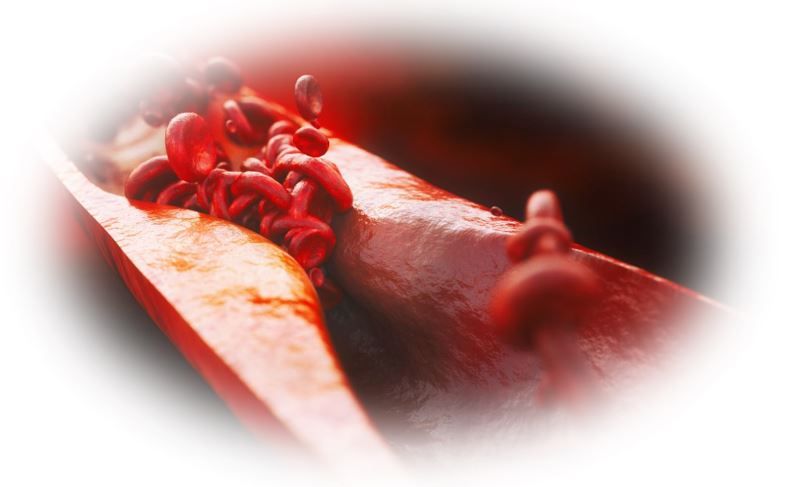- Clinical Technology
- Adult Immunization
- Hepatology
- Pediatric Immunization
- Screening
- Psychiatry
- Allergy
- Women's Health
- Cardiology
- Pediatrics
- Dermatology
- Endocrinology
- Pain Management
- Gastroenterology
- Infectious Disease
- Obesity Medicine
- Rheumatology
- Nephrology
- Neurology
- Pulmonology
Combination Statin Plus Ezetimibe More Effective than High-Dose Statin to Reduce LDL-C in People with ASCVD
In secondary CVD prevention, low/moderate-dose statins plus ezetimibe were superior to high-dose statin for reducing biomarkers, myalgias but did not reduce MACE.
Combination treatment with a low/moderate-intensity statin plus ezetimibe was associated with greater reduction of low-density lipoprotein cholesterol (LDL-C), fewer reports of myalgia, and less frequent treatment discontinuation when compared to monotherapy with a high-intensity statin among individuals with pre-existing atherosclerotic cardiovascular disease (ASCVD), according to a findings of a new systematic review and meta-analysis.1
©Crevis/stock.adobe.com

Despite the reduction in LDL-C levels observed with the statin-ezetimibe combination, however, when compared with high-intensity statin monotherapy, the dual medication approach was not associated with a reduction clinical outcomes, ie, in major adverse cardiovascular events (MACE). The results were published in the journal Clinical Cardiology.1
“Although our study did not demonstrate a clear superiority of combination therapy in reducing MACE, the significant reduction in LDL-C levels and improved tolerability profiles observed with this approach may still provide important clinical benefits,” Kaveh Hosseini, MD, Tehran Heart Center, Cardiovascular Diseases Research Institute, Tehran University of Medical Sciences, and colleagues wrote.1
The American Heart Association/American College of Cardiology jointly recommend high-intensity statin therapy for 2 risk groups: those with ASCVD (ie, secondary prevention) and those at high risk of ASCVD but without clinical manifestations.2 Yet for some individuals the high-intensity drugs are associated with dose-dependent adverse events, including myalgias, that prove intolerable, leading to discontinuation.
Only one-quarter of high-risk and very high-risk individuals with ASCVD reach target LDL-C goals recommended by guidelines from the ECS/EAS, according to Hosseini et al.1 The combination of ezetimibe/low-moderate intensity statin has been shown to reduce ASCVD-related events and to improve LDL-C goal attainment yet only 4% of high risk and 9% of very high-risk patients have been observed to be taking the medications together, the authors added.1 Ezetimibe monotherapy is both effective for lowering LDL-C and well tolerated. However, the foregoing mentioned research notwithstanding, previous meta-analyses have returned inconsistent findings on the superior efficacy or safety profile of the combined statin/ezetimibe strategy compared with high-dose monotherapy.1
The researchers searched PubMed, Embase, and Web of Science databases for relevant studies from inception to July 2023 to compare the 2 lipid-lowering strategies.1 The team included all randomized controlled trials (RCTs) comparing high-intensity statin monotherapy with low/moderate-intensity statin plus ezetimibe combination therapy in patients with ASCVD.
From the initial total of 3060 articles, 32 remained for the analysis after applying eligibility criteria. The full cohort comprised 6162 persons treated with high-intensity statin monotherapy and 5880 treated with combination ezetimibe and statin therapy. Treatment duration across the studies ranged from 1 to 36 months.
LDL-C. Overall, 21 of these studies compared the effect of high-intensity statin monotherapy versus combination therapy on LDL-C levels in patients with ASCVD. The mean difference (MD) in LDL-C lowering between combined therapy and monotherapy was –6.6 (95% CI, –10.6 to –2.5). They reported no significant differences, however, in effects on other surrogate markers including high-density lipoprotein cholesterol, triglycerides, total cholesterol, or high-sensitivity C-reactive protein between the 2 treatment approaches.
Adverse events. Hoseinni and team analyzed adverse events leading to treatment discontinuation across 14 studies. They reported significantly lower risk of discontinuation in those treated with the combination therapy vs those treated with monotherapy(RR, 0.61; 95% CI, 0.51–0.74).1 Based on analysis of 5 studies reporting on adverse events, they found the risk of myalgias lower in the combination therapy group compared with monotherapy (RR, 0.27; 95% CI, 0.13 – 0.57).1
MACE and components. The effects of combination therapy vs monotherapy on composite MACE were evaluated in 5 studies. There were no significant differences reported between the treatment groups (RR, 0.86; 95% CI, 0.69–1.07) nor did the use of the dual therapy vs monotherapy have significant effect on the individual components of MACE including CV mortality, hospitalization, revascularization, nonfatal myocardial infarction, stroke, or all-cause mortality.1
The investigators maintain, nonetheless, that their findings have "significant implications for ezetimibe," given the medication's potential to help improve the attainment of guideline-recommended LDL-C goals for individuals with ASCVD.1
“Although previous studies have examined the efficacy and safety of these therapies, to our knowledge, this is the most comprehensive systematic review and meta-analysis comparing the efficacy of these two treatment approaches on lipid and hs-CRP biomarkers, adverse events, and MACE components altogether,” they wrote.1
References
1. Soleimani H, Mousavi A, Shojaei S, et al. Safety and effectiveness of high-intensity statins versus low/moderate-intensity statins plus ezetimibe in patients with atherosclerotic cardiovascular disease for reaching LDL-C goals: a systematic review and meta-analysis. Clin Cardiol. 2024;47(8):e24334. doi:10.1002/clc.24334
2 Grundy SM, Stone NJ, Blumenthal RS, et al. High-intensity statins benefit high-risk patients: why and how to do better. Mayo Clin Proc. 2021;96(10):2660-2670. doi: 10.1016/j.mayocp.2021.02.032
